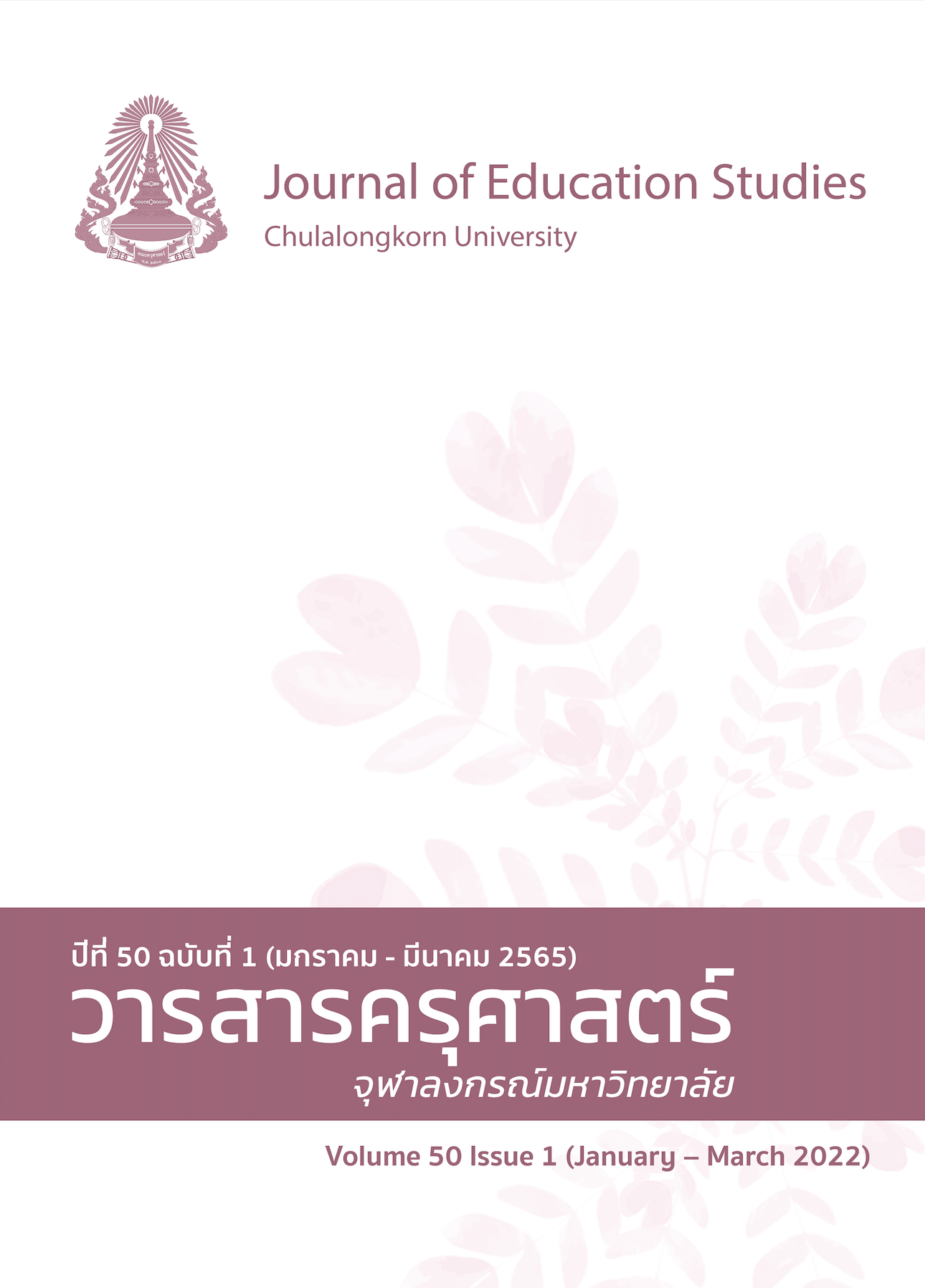American Superhero for Science Teaching
DOI:
https://doi.org/10.14456/educu.2022.2Keywords:
American superheroes, science teaching, science lessonAbstract
American superhero theme is one type of entertainment essence that has proven popular in Thailand which means students directing their attention and energy towards a particular task or activity in classroom and has had a tendency to increase interest among youth through the use of movies, comic books, graphic novels, video games and animations, which revolve around science-related stories and show potential for engagement before opening teaching sessions. American superhero has not been studied for science teaching before. This article reviewed the science contents associated with 32 American superheroes who possesses a superpowers and unique abilities related to Physics, Biology, Chemistry and Technology relate contents and present the guideline to create science lesson from American superhero theme.
References
กระทรวงศึกษาธิการ. (2560). ตัวชี้วัดและสาระการเรียนรู้แกนกลาง กลุ่มสาระการเรียนรู้วิทยาศาสตร์ (ฉบับปรับปรุง พ.ศ. 2560) ตามหลักสูตรแกนกลางขั้นพื้นฐาน พุทธศักราช 2551. โรงพิมพ์ชุมนุมสหกรณ์การเกษตรแห่งประเทศไทย.
Avery-Natale, E. (2013). An analysis of embodiment among six superheroes in DC comics. Social Thought and Research, 32, 71-106.
Barnes, H. (2008). The value of superhero play. Putting Children First, 27, 18–21.
Boyd, B. J. (1997). Teacher response to superhero play: To ban or not to ban? Childhood Education, 74(1), 23–28.
DC Comics (2021, March 14). Characters DC comics. DC UNIVERSE. https://www.dccomics.com
Marvel Comics. (2021, March 14). Marvel character list. MAVEL STUDIOS. https://www.marvel.com
Duncan, R., & Smith, M. J. (2009). The Power of Comics: Continuum International Publishing Group.
Gillen, J (2000). Versions of Vygotsky. British Journal of Educational Studies, 48(2), 183–98
Gesh, L. H., & Weinberg, R. (2002). The dark knight: Batman: A non super superhero: The Science of Superheroes. John Wiley & Sons.
Halliwell, M. (2007). American culture in the 1950s. Edinburgh University Press.
Lincoln, Y. S., & Guba, E. G. (1985). Naturalistic inquiry. Sage.
Muir, J. K. (2008). The encyclopedia of superheroes on film and television. McFarland & Company.
Schwab, J. (1962). The teaching of science as enquiry. In J. J. Schwab, & P. F. Brandwein, (Eds.). The teaching of science (pp. 1-103). Simon and Schuster.
Stemler, S. (2000). An overview of content analysis. Practical Assessment, Research, and Evaluation, 7(17),
-6.
Steven, C. C., McNear, B., Pearlman, R. S., & Kern, S. E. (2010). Beverage - agarose gel electrophoresis: An inquiry-based laboratory exercise with virtual adaptation. CBE-Life Sciences Education, 5, 281–286.
Trimmer, W., & Hawes, P. (2015). In Blessinger, P., & Carfora, J. Inquiry-based Learning for Science, Technology, Engineering, and Math (STEM) Programs: A conceptual and practical resource for educators. Emerald.
Wright, W. B. (2001). Comic book nation: The transformation of youth culture in America. The Johns Hopkins University Press.
Downloads
Published
How to Cite
Issue
Section
License

This work is licensed under a Creative Commons Attribution-NonCommercial-NoDerivatives 4.0 International License.




